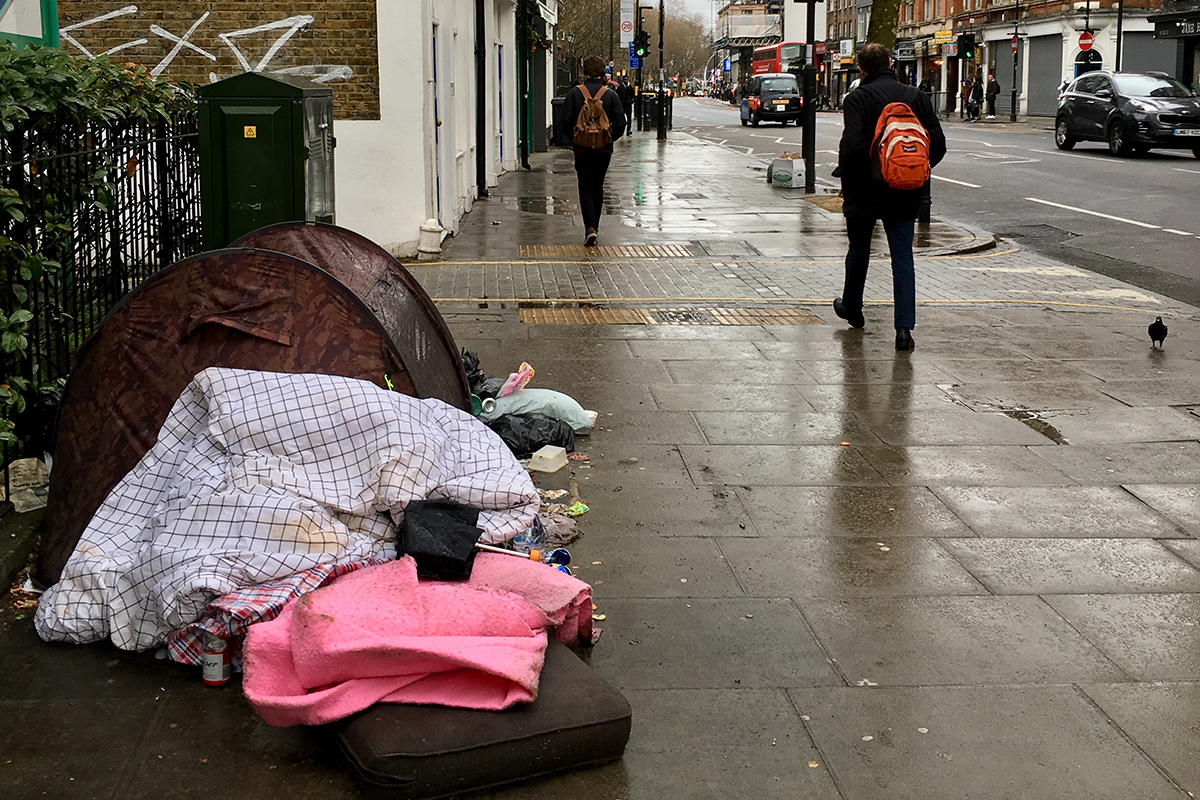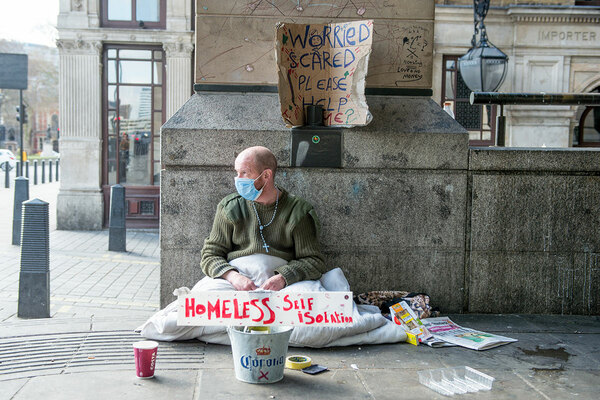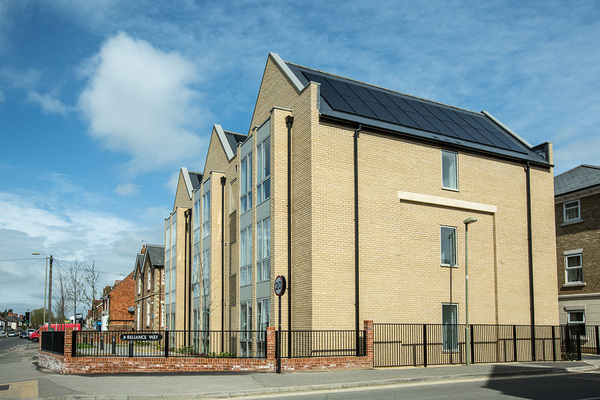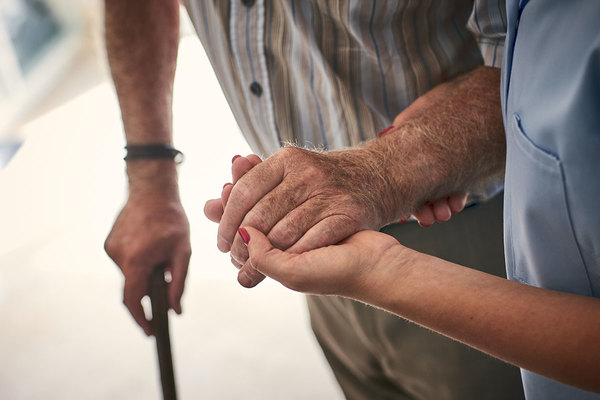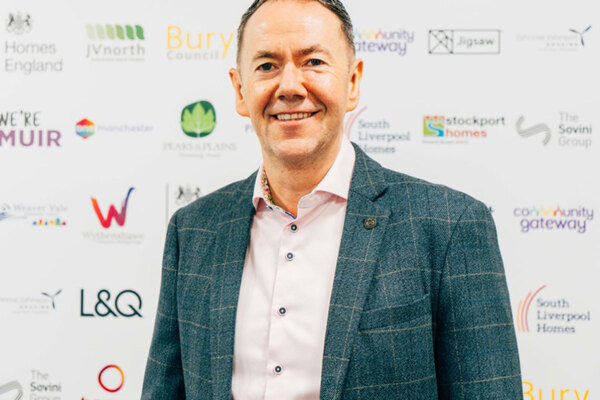You are viewing 1 of your 1 free articles
Communal shelters for homeless people cannot belong in our future
It is high time for the UK to end its use of communal shelters to house homeless people, argues Professor Suzanne Fitzpatrick
Coronavirus prompted a radical and rapid nationwide response to some of the most extreme forms of homelessness in England.
The speed and clarity of the early government response was truly impressive. A letter sent to all local authorities on 26 March instructed them to move everyone sleeping rough or staying in communal shelters into a safe place by that very weekend – a move that no doubt saved lives and protected many from contracting the virus, as they were able to isolate safely.
Our report – by Heriot-Watt University and the UK Collaborative Centre for Housing Evidence – reflects on the early lessons from the crisis response and looks ahead to opportunities to transform the homelessness system for the better.
Councils, with the help of homelessness charities across the country, rose to this unprecedented challenge remarkably well.
With astonishing speed, almost 15,000 people who were sleeping rough or at risk of doing so were helped into self-contained emergency accommodation, often in commercial hotels that would otherwise lay empty during the most severe periods of lockdown. This included more than 90% of rough sleepers known to councils at the beginning of the crisis, many of whom will have been sleeping on the streets for years, who have since been able to protect their health by isolating safely but also have thrived with a place to temporarily call their own.
“It is morally damning that one of the richest nations on earth still relies to any extent on a Dickensian model: mattresses on a floor and sleeping cheek-by-jowl with strangers, many of whom have trauma-induced mental health or substance misuse problems”
Alongside this, we saw the Westminster government take decisive steps to prevent people from becoming homeless in the near future. This includes halting evictions from social, private-rented and asylum accommodation and allowing local authorities to house people originally from the European Economic Area who are not in employment, which is not usually the case. At the start of the pandemic at least, ‘everyone in’ really meant everyone in.
This extraordinary public health-driven effort has been successful in holding down coronavirus infection rates to very low levels among homeless people in England (2-3%). This stands in stark contrast to the position in the US, where up to two-thirds of shelter residents in some cities have been infected.
As lockdown restrictions ease, attention is quite rightfully turning to what happens next. With the economic effects of the pandemic looming on the horizon for many people, we expect more families and individuals to be pushed into homelessness in the near future. Alongside the catastrophic impact of the pandemic, it also provides us with an opportunity to reflect on the shape of homelessness services in the future.
One striking – and shocking – point to have emerged during the pandemic is the extent to which dormitory-style shelters are still used to accommodate homeless people in at least some parts of England.
There are no robust national statistics on the numbers of homeless people dependent on this kind of communal sleeping provision. But the challenge that some local authorities faced in quickly closing down shelters as we went into lockdown indicates that they still remain a significant part of the accommodation support offered to people facing homelessness.
It is morally damning that one of the richest nations on earth still relies to any extent on a Dickensian model: mattresses on a floor and sleeping cheek-by-jowl with strangers, many of whom have trauma-induced mental health or substance misuse problems.
“Enabling people who are sleeping rough to access mainstream housing, in an ordinary community, with access to the support they need, has been proven time and again to work”
Consider the indignity, the exposure to exploitation and threats. Imagine the sheer grinding exhaustion of constantly being ‘on guard’, even while you sleep. It’s not difficult to understand why some people feel like their only option is to sleep rough, even with all the extreme risks that entails.
A decisive shift away from these primitive forms of accommodation was, unsurprisingly, a key hope for the future among most of the senior homelessness experts we interviewed mid-pandemic as part of our research. Many also want to see a more general move away from hostels with shared facilities, such as bathrooms and kitchens, for the health and other reasons this pandemic has highlighted.
In the same breath, some of the people we spoke to feared that the opposite may happen, with communal shelter provision expanded to ensure that the government meets its ambition to ‘end’ rough sleeping by 2024. This would be an understandable but retrograde step.
Enabling people who are sleeping rough to access mainstream housing, in an ordinary community, with access to the support they need, has been proven time and again to work. If everyone is to ‘come inside’ for good, this must be our ambition and communal shelters clearly hold no place in this. Making sure everyone has a safe and stable home not only works, but is the right thing to do.
Professor Suzanne Fitzpatrick, director, Institute for Social Policy, Housing, Environment and Real Estate (I-SPHERE), Heriot-Watt University
Sign up for our care and support newsletter
Already have an account? Click here to manage your newsletters
